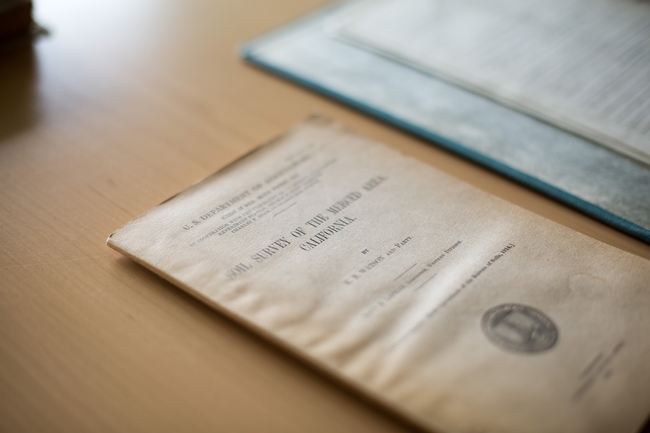UC Cooperative Extension’s archives will help illustrate its value to California
The ongoing project to gather, protect, digitize and share the history of UC Cooperative Extension in California is producing a collection that demonstrates the organization's impact in the past and potential for the future.
The effort was launched by former UC ANR vice president Barbara Allen-Diaz shortly after the 2014 UCCE Centennial celebration. She allocated funds to locate a professional archivist at the UC Merced library, which is becoming known for creating comprehensive digital collections of historical materials.
Archivist Lisa Vallen began work on three pilot projects, collecting materials from UC Cooperative Extension offices in Merced, Ventura and Humboldt counties.
In her initial assessment, Vallen learned that the National Archives has archived some UC Cooperative Extension records. UC Davis has digitized state-level Cooperative Extension and Experiment Station publications. Vallen studied archive efforts for Cooperative Extension in other states. In North Carolina, 4-H records, audio-visual materials and annual reports are being archived and digitized. In Colorado, they are working on digitizing their annual reports.
In Merced, Vallen identified 393 linear feet of material and performed a statistical sampling of 912 items. (A banker box is about 1 linear foot.) After sampling, she was able to cut the archival matter down to 102 linear feet, most of which needs to be re-housed or digitized. A priority is digitizing nearly 367 nitrate negatives, Vallen said. Nitrate negatives were the first flexible film base produced by Eastman Kodak. They were used from about 1900 until about 1950. Because nitrate negatives are flammable and give off poisonous gas, they are not easily stored.
Vallen also found a large amount of research trial reports, raw data and various runs of local newsletters in the Merced farm advisor records.
In Ventura, Vallen found 142 linear feet of material, which after sampling was narrowed down to 65 linear feet. She expects processing of the materials to be complete at the end of summer 2017.
“Ideally, historical records should be kept in a space that's climate controlled,” Vallen said. “In Ventura, they have some in a container on a farm. That's not ideal at all.”
The review of Humboldt County material will begin in late spring.
In addition to the pilot archival work, Vallen is developing a manual of policies and best practices for archiving material. The manual will guide UCCE offices on how to label, rehouse and retain a collection of important records, and provide retention guidelines.
“The manual will suggest what materials to keep, for how long, and whether they should be discarded,” Vallen said. The manual will also outline methods for collecting and preserving records that are “born digital,” such as email, PowerPoint presentations and website content.
In order to educate the public and researchers about UC Cooperative Extension, its history and the efforts of the UC Merced library staff to preserve the history, UC ANR has committed to funding the archive project through June 2019.
“There's no question about the value of this project and the richness it brings to the whole state, not just UC,” said UC Merced librarian Haipeng Li.
For more on the UCCE archive project, follow Vallen's blog on the UC Merced library website.

